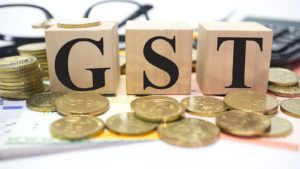GST rates slashed for more than 50 items
The decision to slash the GST rates for more than 50 items might be a good move for the Indian middle class, but reports say that the decision will lower revenue by as much as USD 2.2 billion each year.
The Goods and Services Tax (GST) council, after a long wait in its 28th meeting slashed a number of items that fell under the highest tax slab of 28 pc. The GST rates on more than 50 consumer-centric products have been slashed, some of which include washing machines, refrigerators, footwear, sanitary pads, televisions up to a certain size, hotel bills below INR 7,500 per night, vacuum cleaners, rakhis, stone, marble and wooden deities among others. The new decisions will be effective from July 27, said interim finance minister Piyush Goyal.
Apart from TV sets, washing machines and refrigerators, the council has cut tax rates on 14 other white goods including water coolers, water heaters, juicer mixers, grinders, shavers and hair dryers. GST rates on all leather products have been slashed from 28 pc to 18 pc. Common footwear of up to INR 1,000 will be taxed at 5 pc. Earlier, only footwear costing up to INR 500 was eligible for the concessional tax rate of five per cent. Also synthetic textile manufacturers are planning to cut the prices of their products by five per cent following the government’s decision to reduce the effective GST rate on its raw materials. The move will cut effective GST on man-made (synthetic) fabric to five per cent from the earlier 12 pc rate.
The decision to withdraw GST on sanitary napkins and make them tax free was celebrated by many. Also to ensure that the prices are not raised by domestic producers the Centre has directed the ‘Anti-profiteering Authority’ on GST to ensure that prices of sanitary napkins sold in the country come down. It is now the duty of the Authority to ensure that the GST rate cut benefits are passed on to the consumers.
On July 23, home minister Rajnath Singh further added that the central government is open to further review of the GST rates of different items.
GST council’s decision to allow quarterly return filing
The council also approved the proposal to allow quarterly return filing for taxpayers with a turnover of up to INR 50 million. The move will benefit nearly 93 pc of the registered tax payers as they would now be required to file returns only once in three months. So far, businesses with turnover of up to INR 10.5 million were permitted to file returns quarterly.
The Confederation of All India Traders (CAIT) in a statement said that the single page return form to be filed quarterly for traders having turnover up to INR 50 million is a bold step that will ease miseries of traders.
“The decisions relating to simplification of returns and especially keeping the interests of small taxpayers are noteworthy. This would facilitate ease of doing business both for small and large taxpayers,” FICCI President Rashesh Shah said.
How will the rate slash affect the economy?
According to a Bloomberg report on July 23, the decision to cut GST tax rates will lower revenue by as much as USD 2.2 billion each year and is raising the prospect of the country missing budget goals again this year.
Even though the decision will give relief to the Indian middle class and help the ruling party before 2019 general elections, this move could result in a revenue loss that’s as high as one percent of tax budgeted to accrue to the federal government.
The NDA government can hardly afford to give up any source of revenue as rising oil prices threaten to widen India’s fiscal deficit. The government has already widened its deficit goal for the current fiscal year to 3.3 pc of gross domestic product from three percent, putting pressure on bond yields. However, Piyush Goyal clarified and said that the revenue loss will be minimal.
Even though the monthly GST receipts have picked up after initial problems, but are still not near the government’s annual tax target of about INR 15 trillion.










